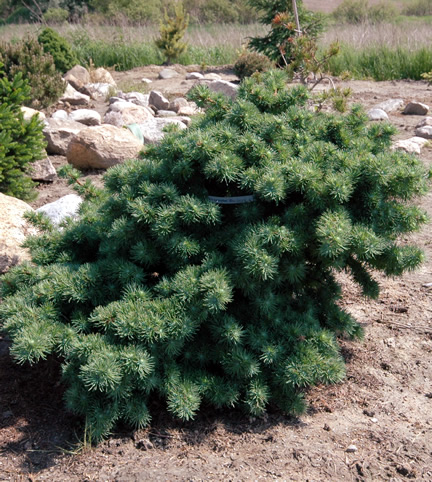| General Description | Is a deciduous conifer. Large tree with whorls of light green needles that change to yellow and orange in the autumn months. Along with horizontal branching. |
| ID Characteristic | Has reddish-brown shoots. The bark is grey with a rusty-brown inner bark. Needles grow in a whorled form which fall off the tree in the winter. |
| Shape | Straight stemmed and pyramidal crown. Open conical shape. Horizontal branching. |
| Landscape | Well used in open areas such as golf courses and parks. Strong durable wood used for construction. Used as material for bonsai and used as ornamental piece in parks and gardens. |
| Propagation | Main method of propagation is seed. Should be sown from late winter to spring. Propagate by softwood or semi-ripe cuttings in the summer. Graft in the winter. |
| Cultivation | Grown in full sun. Well-drained soils but can tolerate poorly drained soils. Acidic to neutral soil conditions. Tree is easily transplanted when it is in its dormant stage. |
| Pests | Pests may include Japanese beetles, woolly aphids, sawflies and larch bark beetles. Larch bark beetles are the greatest threat and will kill the tree (thought to only occur in Northern Britain). Potential diseases may include cankers, needle cast, needle rust and honey fungus. |
| Habitat | Japan. |
| Bark/Stem Description | Bark on young trees are scaly and grey with elongated plates. As the tree matures it gets a reddish-brown inner bark. |
| Flower/Leaf Bud Description | Conical to rounded shaped buds that are a reddish-brown to glaucous purple. Pointed and scaled buds that are resinous. |
| Leaf Description | Leaves are needle-like and are 2.5-3 cm long. Start out as single leaves and as plant mature the leaf structure becomes whorled. Needles are green to glaucous-blue and turn orange to yellow before dropping in autumn. |
| Flower Description | Male flowers are small and rounded with a yellow colour. Female flowers may be yellow, red, pink or green with long, curved scales. Blossoms in early spring April- May. |
| Fruit Description | Brown cones ranging from 2-4 cm long. Cone scales that are strongly reflexed with a rosette appearance. Cones mature in autumn to early winter. |
| Colour Description | Green foliage throughout spring and summer months. Needles turn a golden colour in autumn before dropping. The outer bark is a greyish-brown with the inner bark being reddish-brown. Brown cones in which the trees seeds are held in. Flowers in early spring range from yellow, red, pink to green. |
| Texture Description | It has a fine to medium foliage texture but becomes coarser in the winter. |
